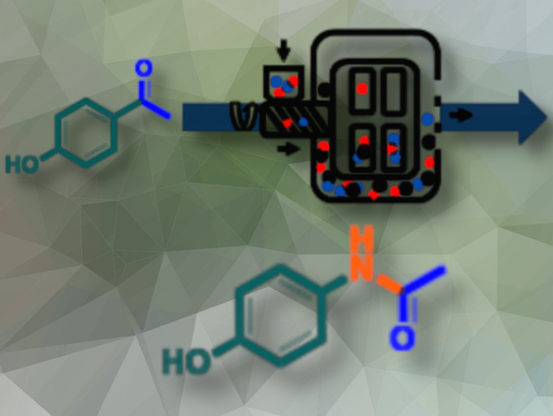Behind the Science Interview: Bead-Mill Technology for Greener Paracetamol Synthesis
https://doi.org/10.1002/chemv.202400019
#chemistry #chemistryviews #chemviews #chemiverse #research #behindthescience #greensynthesis #Paracetamol
Green Synthesis of 3,4-Unsubstituted Isoquinolones: Rhodium(III)-catalyzed C–H activation and annulation in ethanol
#chemistry #chemistryviews #chemviews #chemiverse #research #greensynthesis #synthesis #catalysis
https://link.springer.com/article/10.3103/S0095452723030040
#greensynthesis #quantumdots #CdTe #toxicity #humancells #animalcells #cancercellculture
Abstract
Since the nanoscale in combination with luminescent properties and prospective applications in different fields of optoelectronics and biomedicine is stimulating a growing interest towards research ..
Keywords:
green synthesis
quantum dots
CdTe
toxicity
human cells
animal cells
cancer cell culture
Green Synthesis of CdTe Quantum Dots and Their Effect on Human and Animal Cells - Cytology and Genetics
Abstract Since the nanoscale in combination with luminescent properties and prospective applications in different fields of optoelectronics and biomedicine is stimulating a growing interest towards research in the area of cadmium telluride (CdTe) quantum dots (QDs), the method of “green” synthesis of CdTe QDs with the use of the Pleurotus ostreatus mycelium culture as a biological matrix has been developed. The study of their physical and chemical characteristics has shown that the synthesized CdTe QDs are characterized by a crystalline structure and a predominantly spherical morphology and are 3–8 nm in size with the luminescence maximum within the 340–370 nm range. The study of their effects on different types of mammalian cells has shown that CdTe QDs have dose-dependent effects on mouse endothelial cells and human and rat erythrocytes, T- and B-lymphocytes, colorectal cancer cells (Colo 205), and human breast cancer cells (MCF-7). In particular, suppression of proliferative indices of endotheliocytes and an increase in the count of dead cells were observed, which indicates the cytotoxic action of nanocrystalline CdTe and its antiproliferative effect on endothelial cells. At the 5 µM concentration, CdTe QDs exhibited hemolytic activity, due to their action on erythrocytes, and affected adhesive contacts and cancer cell survivability. At the same time, human breast cancer cells (MCF-7) were more sensitive to their action. The data obtained are exclusively important for the understanding of mechanisms underlying the toxicity of CdTe QDs and for their future application in biological and biomedical research.
We are very proud that our colleagues published a discovery to lower #Co2 #Emissions in the #IndustrialSector by using #GreenSynthesis 👩🔬
https://www.fhi.mpg.de/1178708/2023-01-12_Discovery_To_Lower_CO2_Emissions?c=368147
